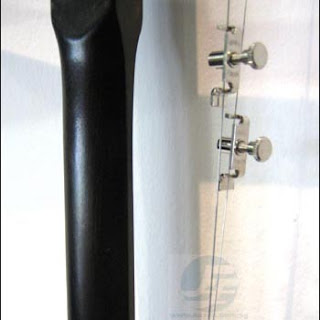I was setting up some Erhus for a customer the other day. The bows on the new Erhus came without rosin. If anyone of you have rosined a new bow before, you'll know the amount of effort it takes to rosin a new bow. For the first two bows, I used this
Shanghai Dunhuang rosin and the effect is pretty good. It gave a smooth bowing action.
Since I had to setup 15 Erhus, I got a little lazy after a while and brought out this box of rosin powder that I bought from Frankfurt a few years back. They use rosin powder in factories to rosin a bow in the quickest time by bathing the bow hair in the rosin powder and giving it a little 'scrub' to work the rosin into the hairs.
I gave it a try on the Erhu and it sounded really awful. It sounded so harsh and sandy - like a old record with loads of static. I was wondering if there is something wrong with this particular Erhu. Are the strings are rusted? twisted? or I just got a lemon. Finally, I had a flash of brilliance and took one of the earlier bows I rosined with a rosin cake and tried it on the Erhu. Tada! The problem lies with the bloody bow I rosined with the cake powder.
I think what happened is the humid weather of Singapore caused some of the rosin powder to lump together into not so fine powder but small particles. These are the things that are causing the static sounds. Coupled with the fact that my colleague grinded some other 100 brands of cheap rosins and mixed them into the powder box - you have a recipe for disaster.
By the time I figured all these out, my colleague has already bathed another 12 bows in that extremely dangerous powder keg. We ended up washing the bows in soapy water. When it dried, we had a double hard time rosining the bow with rosin cake because apparently the soap we used has 'moisturizing properties'.
Some lessons can be learned here:
- Be patient when rosining your new bow.
- A good rosin does matters.
- When you get static sounds and can feel the small particles when bowing, its time to change/wash the bow.
- Bow hair don't need moisturizing. Mild dish soup will do.













